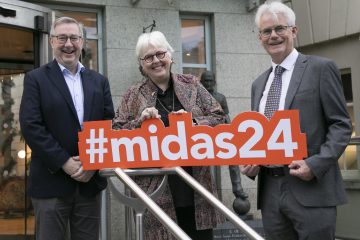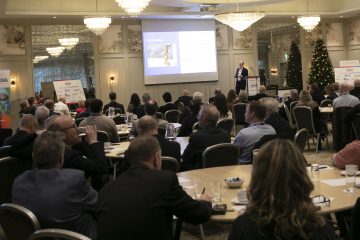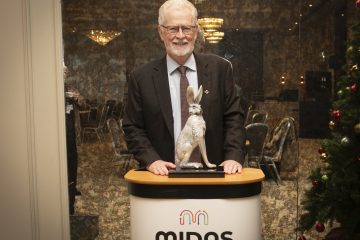Technology that Irish electronics firms design and develop in Ireland will soon appear in many smartphones and home-entertainment devices for years to come.
These chipmakers, known as fabless chipmakers because they outsource the manufacturing of their chips to locations like Taiwan, where fabrication facilities are aplenty, are beginning to make strides in Silicon Valley and elsewhere.
Many of these companies’ leadership teams have their origins in multinational organisations that, prior to creating their own-branded products, developed intellectual property (IP) other companies would use elsewhere.
One example is IP around MP3 players a team at Parthus in Dublin developed, which ended up being licensed to a company in Texas called Sigmatel and went on to become the chip that powered the Apple iPod Shuffle.
Microelectronics sector in Ireland
Ireland has a thriving microelectronics sector, with companies like Analog Devices starting up in the country in the 1970s, and Intel in the late 1980s. The industry plans to create 1,200 new jobs in the next three years, according to industry organisation MIDAS.
Now, entrepreneur-led companies are beginning to make waves. These include DecaWave, whose employees have invented tiny tags that identify the specific distance to any object, person or thing with plus or minus 10cm precision.
Another firm to watch is Movidius, whose team has signed a major deal with Japanese consumer electronics giant Toshiba to develop a high-resolution 3D system for high-end smartphones.
Movidius has also struck a €19m deal with Chinese manufacturer Keen High Technologies to collaborate on future consumer electronics.
Galway firm Ikon Semiconductor is behind a new electronics design that could prove vital to the growing global LED lighting industry.
Dublin-based Spectra7, formerly known as RedMere, has introduced what it claims to be the world’s thinnest ‘smart’ active HDMI cables for consumer electronics giant Monster and retailer RadioShack in the US.
While some companies, including S3, have grown to considerable scale over time with annual revenues of €22m and employing 250 people, rising stars like Movidius and DecaWave are about to hit the big time.
The name of the game in fabless chip manufacturing is IP, but as Ciaran Connell, CEO of DecaWave pointed out, building a fabless tech company takes time and is not without its share of risk.
Michael McLaughlin, DecaWave’s CTO, founded the company in 2004. He worked as a one-man band until Connell came on board in 2007.
Connell said DecaWave employs 30 people but is set to double its workforce by 2014 and will potentially double it again the following year.
DecaWave has launched the first chip of its ScenSor DW1000 wireless family to make indoor location and communication more accurate and power efficient within accuracy of 10cm. The chip can complement or replace RFID and Wi-Fi technology currently used for indoor tracking – where GPS signals are unavailable – and if manufactured in volume could be included in a vast array of consumer devices, including smartphones and tablet computers.
Venture capital
DecaWave last year raised €6m in venture capital from private investors in the US and Europe. The investment brought the total funding DecaWave has raised to €12.4m. The company also appointed Jim O’Hara, former Intel Ireland country manager, as chairman.
“Going into the fabless chip game can be very capital intensive," Connell said. "Firms in this business typically must spend around US$100m before they have a chip. We bucked the trend by having a chip developed after spending in the region of US$20m."
Connell also said it is about betting on the future. Development on that chip began in 2007 and six years later it is in production.
“Predicting how the market is going to be doing and what it will require six years in advance is probably the easy part," Connell said.
“The incredibly tough part is raising the funding, keeping people motivated, keeping them on even if you’re not paying them. Now we have an amazing product and every one of the large global hardware manufacturers is talking to us."
Connell said DecaWave expects to see its chip appear on every smartphone and tablet, and not only on navigation devices.
“Every year, 500m smartphones are being sold and within three years 1bn phones per annum will be sold. By that stage, locating your device to within 10cm accuracy will be standard," Connell said.
The penny drops
Then there’s Movidius, a fabless semiconductor company whose technology delivers multimedia capabilities, including high-definition 3D.
David Moloney, Movidius’ CTO, and Sean Mitchell, the company’s COO, are former executives of Parthus and the founders of Movidius.
The company recently raised US$16m in a Series D round involving Draper Fisher Jurvetson, Atlantic Bridge, Capital-E and the AIB Seed Capital Round.
Movidius employs 55 people and envisages taking on a further 30 to 35 people to focus on new products in the coming year.
Moloney said the desire for he and Mitchell to start their own business came about a decade ago at Parthus, after they saw IP for MP3 players and Bluetooth being licensed out to other firms. They felt they could start their own business.
“That’s when the penny dropped. Myself and Sean came to the conclusion that licensing IP was a mug’s game and the smart place to play was realising an actual chip, that it would make a much more sustainable business."
The duo decided to focus on designing programmable chips in Dublin, as well as running a software lab out of Timi?oara, Romania.
Echoing Connell’s remarks about spotting the big tech trends years in advance and betting on the future, Moloney said the fabless chipmakers can operate with a nimbleness and clarity of vision that the larger manufacturers lack.
“While you don’t have the scale of a big company, you do have smart people and the agility to identify markets further down the line and use the agility and flexibility to take on the big guys," he said.
"It’s the classic innovator’s dilemma in many cases – often the big guys don’t have the broad vision that a start-up has and as a result can get out-manoeuvred."
In Movidius’ case, the opportunity is to create a class of low-power processors that provide high-end 3D image processing and editing at a fraction of the power usage of chips from players like ARM and Intel.
“Our first-generation chip, which is in production, can provide 10 times the industry standard for images per watt and the next generation will provide 20 times the number of images per watt per processor," Moloney said.
“For next-generation apps, like augmented reality or 3D, it requires 6 watts on phones – the equivalent on our chip would be half a watt."
Movidius has its eyes on the future of mobile gaming and home entertainment. Here, artificial intelligence and augmented reality would be used in smartphones and wearable devices, like Google Glass, to transform an ordinary living room into a battlefield or spooky dungeon, or a murky Dublin street into bustling Rio de Janeiro.
Yet an even bigger opportunity Moloney sees is in taking the low power advances in smartphone chips and bringing them to high-end server requirements of internet firms like Google or Facebook, who spend 30pc of their running costs to cool data centres.
PEPPHER project
Movidius has already been engaged in an EU Framework 7 R&D project called PEPPHER, which is focused on tackling the cloud computing opportunity of reducing the 30% cooling costs down to virtually zero.
“The sky’s the limit," Moloney said.
According to Paul McCloskey, a technologist with Enterprise Ireland’s electronics division, the fabless chipmakers in Ireland are a small yet compelling segment of the ICT sector to keep an eye on.
Companies like Ikon Semiconductor are reducing the cost of materials and power used for LEDs, McCloskey said, and Silicon Labs has created a digital chip that has powerful environmental applications, like humidity sensing.
“We have a flourishing indigenous microelectronics sector, but the real bonus is the sheer experience and talent that has developed in step with microelectronics over the last 30 or more years," said McCloskey.
“The interesting thing is these small companies are addressing fairly big markets so there’s always the possibility of companies growing really fast if they hit the right market at the right time with an innovative product," he added.
“The more start-ups we create in this particular segment of ICT, the bigger a chance we have of scoring fairly big wins."
Or, as Connell said, it is good for Ireland because manufacturing is done in Asia at a low cost, while the high-value technology development can be completed in Ireland.
A version of this article appeared in The Sunday Times on 24 November 2014
This article appeared on Silicon Republic 26 Nov 2013 – www.siliconrepublic.com


